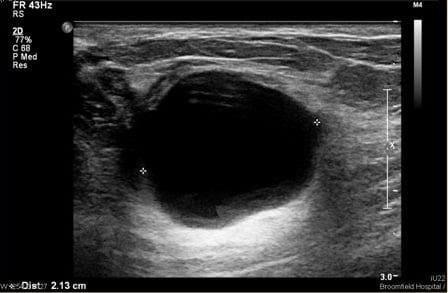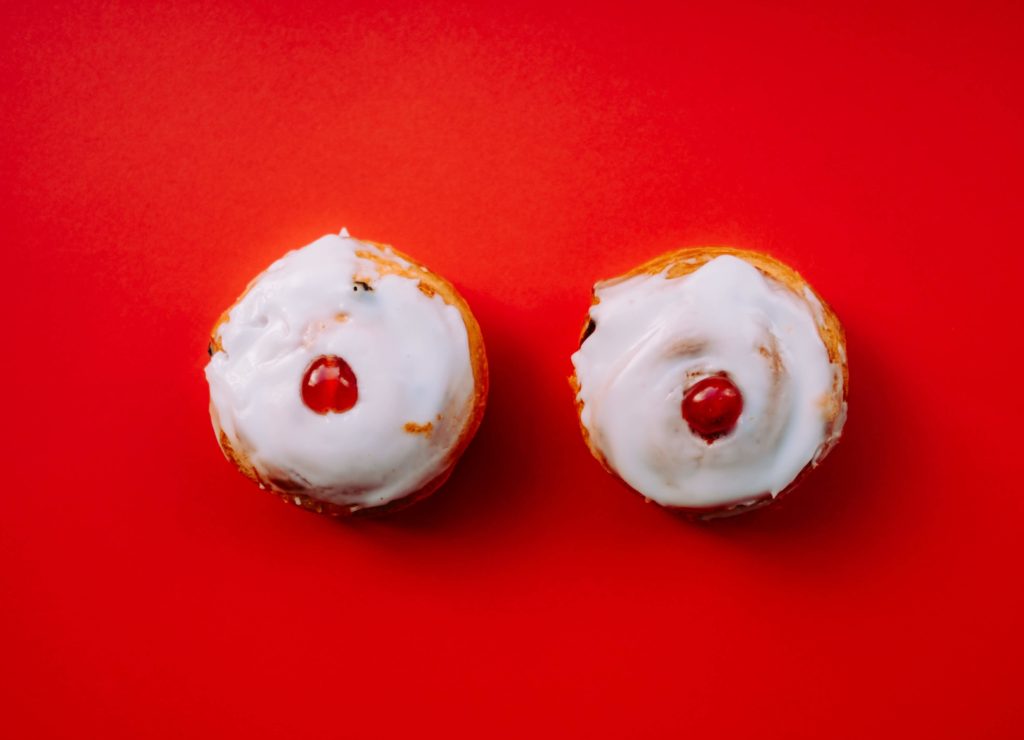There are many causes of breast lumps, and cysts can be one of them. Breast cysts can develop in women of any age, they are extremely common and can affect just one or both breasts.
They are round fluid-filled sacs, like tiny balloons filled with fluid if you will. Breast cysts are not cancerous (benign) and do not develop into cancers.
What are the causes of breast cysts?
The breast is made up of ducts and lobules, surrounded by fatty, glandular and fibrous tissue. Cysts can develop within any of these and we think it may be influenced by hormonal changes as part of normal breast architecture.
Do breast cysts cause symptoms?
Depending on the size, cysts can present as breast lumps and occasionally cause discomfort.
They can appear quite suddenly and fluctuate in size. We know that if we leave them alone, the fluid within the cyst can sometimes get absorbed making the lump disappear altogether given time.
They can also be asymptomatic i.e cause no symptoms. You may not know you have them until you have some form of scan. It is not uncommon to incidentally find cysts when we perform a mammogram or breast ultrasound scan. When we find cysts this way, they are usually so small that they would not be palpable.
Do I need any scans?
If you come to the breast clinic with a breast lump, you will get a triple assessment i.e. physical examination, scans (mammogram/ultrasound) +/- biopsy. We can normally tell if a lump is a cyst by what it feels and what it looks like on imaging.

However, on the rare occasions that there is any doubt about the possibility the lump is a cyst, we would take the fluid out of the cyst by putting a needle through it (aspiration) and see if the cyst collapses completely. If a solid component remains after aspiration, we would perform a biopsy of this lesion.
How do we treat breast cysts?
In the past it was not uncommon that we would surgically remove them. We now know that this is unnecessary and so now this is no longer common practice.
As breast cysts are benign and do not evolve to become cancer, they can be safely left alone. Sometimes if they are large and uncomfortable, we may aspirate the fluid out of the cyst to collapse it. This can give symptomatic relief. However, we do not do this routinely because the fluid that has been aspirated from the cysts may reaccumulate, thus questioning the benefit of the aspiration in the first place. We also do not want to introduce infection, which with repeated aspirations may be a risk.
Do I need to be followed up?
No, you do not need regular check-ups or to be followed up. As cysts are not dangerous, you do not need to have intensive surveillance with regular scans or mammograms.
Can I do anything to prevent them from developing?
Unfortunately not. Sometimes cysts can be more prevalent when oestrogen levels within the body have been altered in some way. For example, starting taking the oral contraception pill or changing to a different type of contraceptive method, taking HRT or going through the menopause. However, you may also have breast cysts for no obvious reason. Some women’s breasts seem to be more susceptible to developing cysts than others, but this can be put down to the general make-up of the breasts itself.
Final thoughts
The most important thing is to remain breast aware. Examine your breasts regularly and if you notice any changes or find new lumps, you should see your doctor. You can’t assume that these are cysts, even if you have had them in the past.
If you have been diagnosed to have breast cysts, please don’t worry. Most women have breast cysts to varying degrees and they are extremely common.


